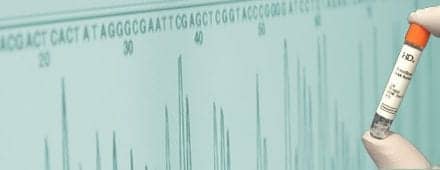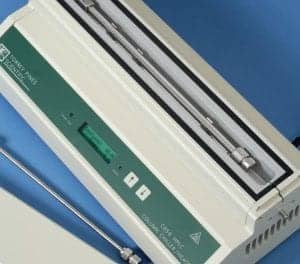This is a companion article to the feature “Diabetes Diagnosis and Monitoring.”
By Jeannine T. Holden, MD, MBA
For diabetic patients seeking to enhance control over their blood glucose levels, testing devices designed for use at the point of care offer demonstrated benefits in that they provide real-time results, thereby mitigating patient noncompliance with recommended testing frequency and facilitating immediate therapeutic decisionmaking.1,2
Even so, research indicates that clinics should remain cautious about relying solely on such point-of-care (POC) devices for diabetes diagnosis and management. While the benefits of POC testing include immediacy of feedback and patient satisfaction, the strengths of laboratory-based testing lie in its well-defined quality control protocols, accuracy, standardization, and robust informatics systems.5–8 To make the most of available diagnostic and monitoring technologies, clinics should balance the advantages of POC testing with the strengths of laboratory-based testing.
The clinical utility of laboratory-based HbA1c testing was first demonstrated in the 1970s.3 However, it was not until 2010 that the standardization of HBA1c testing had progressed to the point that the American Diabetes Association (ADA) could adopt HbA1c testing as a standard of care.4 Since that time, the performance of HbA1c testing in the laboratory and at the point of care has been the subject of considerable research.
One study of more than 40,000 data points found a consistently negative bias in POC HbA1c test results when compared to laboratory-based test results. Women and children were most affected by the negative bias of the POC tests.9 For similar reasons, laboratory-based testing is recommended over POC testing for managing glycemic control in adolescent patients presenting with HbA1c levels of 14% or more.10 Further, researchers recommend that POC results for pregnant women be confirmed by laboratory testing.11

Figure 1. Performing the company’s advanced HbA1c test, the DxC 700 AU clinical chemistry analyzer from Beckman Coulter is intended for use in mid- to high-volume laboratories.
Managing patients with diabetes requires awareness of such clinical scenarios, so that it can be determined when laboratory testing is needed in addition to or instead of POC HbA1c testing (Figure 1).
The laboratory continues to play a vital role when it comes to diabetes diagnosis. While there is currently just one POC device approved for diabetes diagnosis, the number of near-patient laboratories able to perform such testing is limited.12
Clinical guidelines do not include the use of POC devices for diabetes diagnosis.13,14 A shift in the role of POC devices from monitoring to diagnosis would require operation by skilled laboratory professionals, oversight by an outside quality assurance entity, and equivalence in quality with clinical laboratory instrumentation. A diagnosis developed through the use of a POC HbA1c test would also necessitate confirmatory testing by laboratory instrumentation.14
As diabetes continues to increase in prominence on the world stage, testing methodologies will also continue to advance, providing physicians and patients the information they need to combat the growing health threat. Clinical laboratories will remain foundational to this effort, offering expertise for the full range of patient populations, supporting decisionmaking, and driving care to improve health in populations worldwide.
Jeannine T. Holden, MD, MBA, is chief medical officer at Beckman Coulter. For further information contact CLP chief editor Steve Halasey via [email protected].
References
- Lian J, Liang Y. Diabetes management in the real world and the impact of adherence to guideline recommendations. Curr Med Res Opin. 2014;30(11):2233–2240; doi: 10.1185/03007995.2014.952716.
- Whitley HP, Yong EV, Rasinen C. Selecting an A1c point-of-care instrument. Diabetes Spectr. 2015;28(3):201–208; doi: 10.2337/diaspect.28.3.201.
- Saudek CD, Brick JC. The clinical use of hemoglobin A1c. J Diabetes Sci Technol. 2009;3(4):629–634; doi: 10.1177/193229680900300402.
- American Diabetes Association. Standards of medical care in diabetes, 2010. Diabetes Care. 2010;33(suppl 1):S11–S61; doi: 10.2337/dc10-S011.
- Schnell O, Crocker JB, Weng J. Impact of HbA1c testing at point of care on diabetes management. J Diabetes Sci Technol. 2017;11(3):611–617; doi: 10.1177/1932296816678263.
- Jayakody C, Hull-Ryde EA. Instrument quality control. Methods Mol Biol. 2016;1439:99–113; doi: 10.1007/978-1-4939-3673-1_6.
- Jones RG, Johnson OA, Batstone G. Informatics and the clinical laboratory. Clin Biochem Rev. 2014;35(3):177–192.
- Weykamp C. HbA1c: a review of analytical and clinical aspects. Ann Lab Med. 2013;33(6):393–400; doi: 10.3343/alm.2013.33.6.393.
- Clark JL, Rao LV. Retrospective analysis of point-of-care and laboratory-based hemoglobin A1c testing. J Appl Lab Med. 2017;1(5):502–509; doi: 10.1373/jalm.2016.021493.
- Agrawal S, Reinert SE, Baird GL, Quintos JB. Comparing HbA1c by POC and HPLC. R I Med J. 2018;101(7):43–46.





